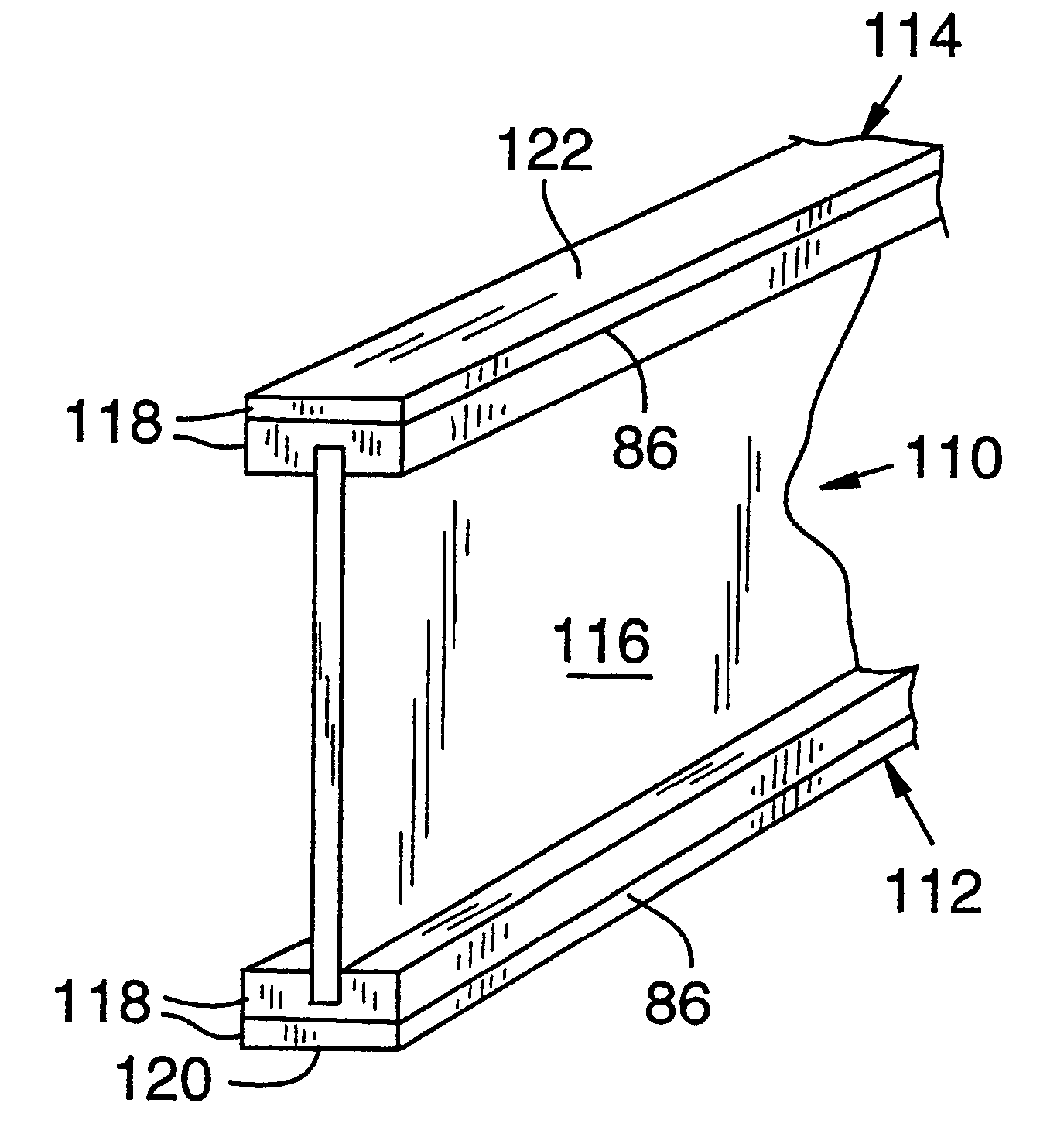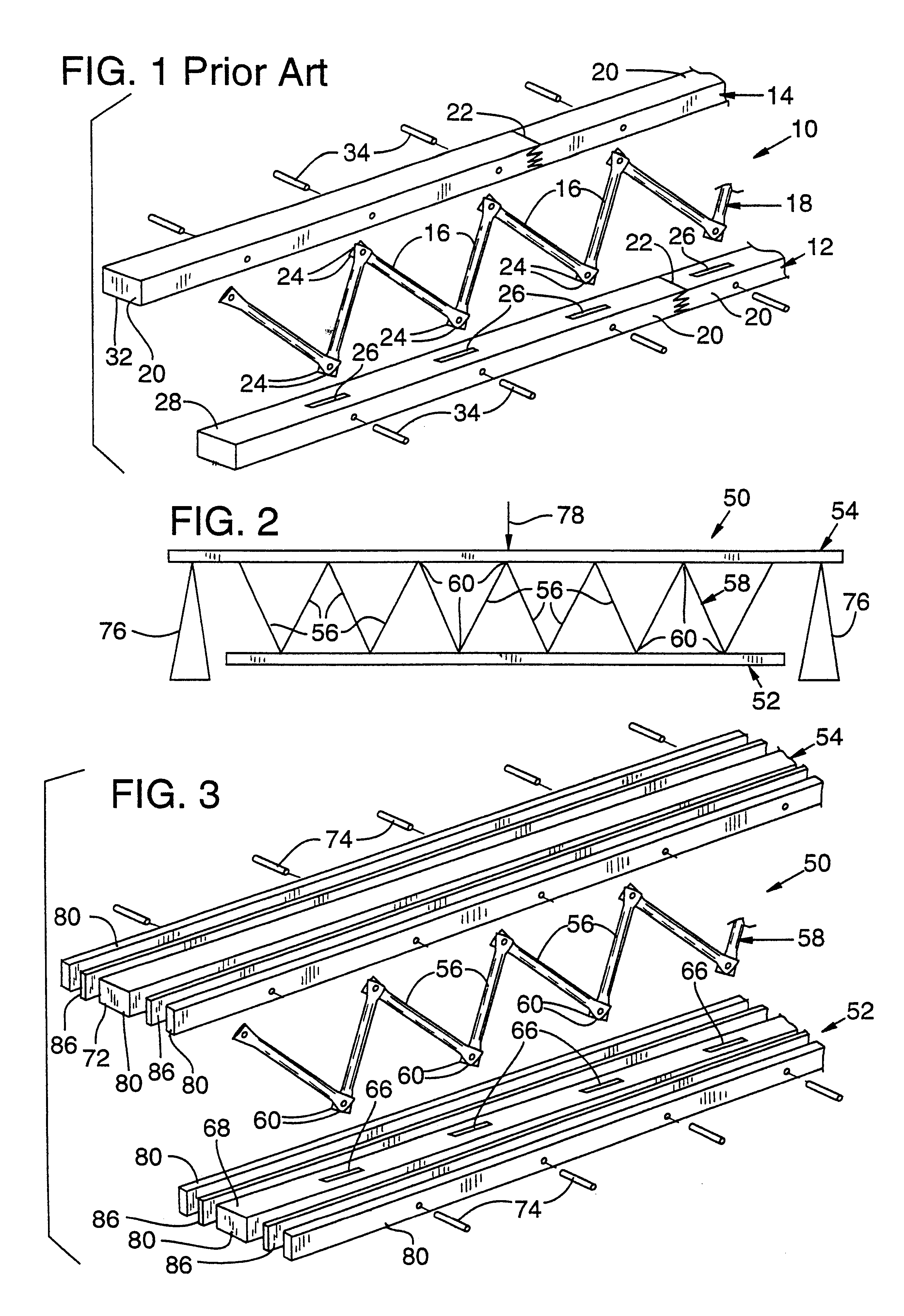Wood I-beam conditioned reinforcement panel
a technology of conditioned reinforcement and conditioned beams, which is applied in the direction of girders, joists, wood layered products, etc., can solve the problems of increasing the cost of steel web wood i-beams, and requiring the use of oversized flanges of lower quality wood, etc., to achieve the effect of increasing the ductility ratio, increasing the resistance to these failure modes, and increasing the strength of greater
- Summary
- Abstract
- Description
- Claims
- Application Information
AI Technical Summary
Benefits of technology
Problems solved by technology
Method used
Image
Examples
Embodiment Construction
FIGS. 3 and 4 show a metal web wood I-beam 50 that includes an opposed pair of elongated wood flanges 52 and 54 that have positioned between them multiple straight metal (e.g., steel) tubes 56 arranged as a substantially continuous tubular metal web 58 that preferably forms a zig zag pattern and defines a plane 59 (FIG. 4) that extends through flanges 52 and 54. Metal tubes 56 have ends 60 that are flattened parallel to plane 59 of metal web 58 to fit within either slots 66 in top surface 68 of flange 52 or similar slots (not shown) in bottom surface 72 of flange 54. Metal pins 74 pass through the sides of flanges 52 and 54 and flattened ends 6C of tubes 56 to secure them to flanges 52 and 54.
A typical structural use of metal web wood I-beam 50 is to extend as a beam or joist over and bear a load along an otherwise open region. As a simplified, exemplary representation of such use, metal web wood I-beam 50 is shown in FIG. 2 with its ends supported by a pair of blocks 76 and bearing...
PUM
| Property | Measurement | Unit |
|---|---|---|
| Thickness | aaaaa | aaaaa |
| Thickness | aaaaa | aaaaa |
| Length | aaaaa | aaaaa |
Abstract
Description
Claims
Application Information
 Login to View More
Login to View More - R&D
- Intellectual Property
- Life Sciences
- Materials
- Tech Scout
- Unparalleled Data Quality
- Higher Quality Content
- 60% Fewer Hallucinations
Browse by: Latest US Patents, China's latest patents, Technical Efficacy Thesaurus, Application Domain, Technology Topic, Popular Technical Reports.
© 2025 PatSnap. All rights reserved.Legal|Privacy policy|Modern Slavery Act Transparency Statement|Sitemap|About US| Contact US: help@patsnap.com



